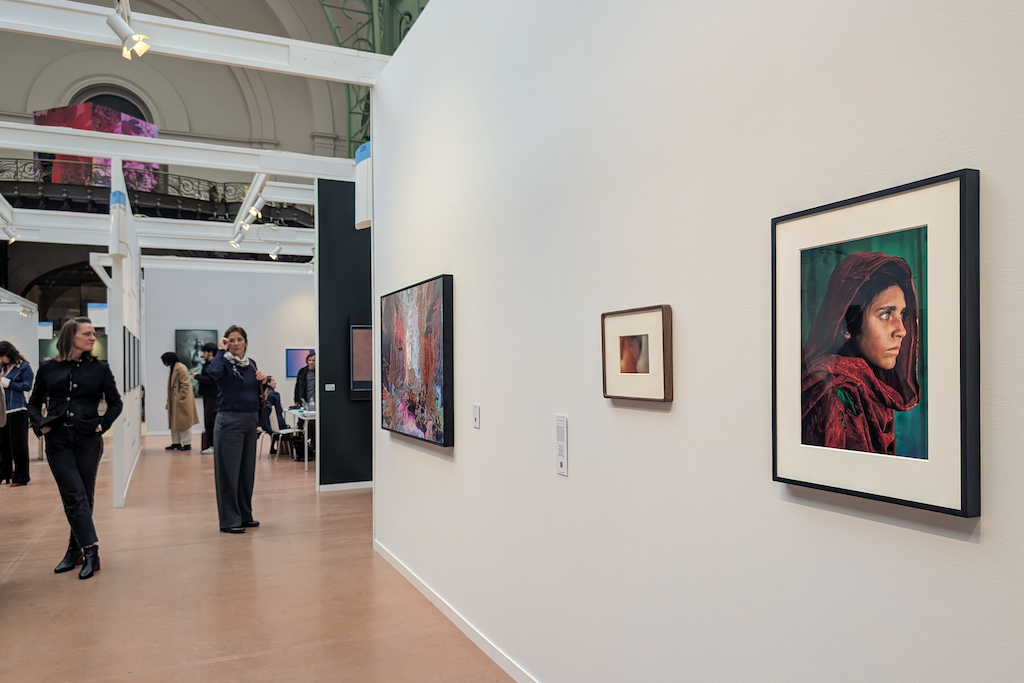
In the original portrait, Gula stares directly at the camera, but Ganbrood’s version turns what is apparently the same figure in three-quarter profile, wilfully replacing the immediacy of the original with something closer to a passive emblem.

I fully understand Steve McCurry’s initial shock upon encountering my work The Second Gaze (2025) at Heft Gallery’s booth at Paris Photo on November 13. We spoke briefly. He seemed appalled and appeared unsure of what he was looking at. I did my best to explain the intention behind the piece, and I hope he will take the time to read the email I sent him before the image was exhibited in Paris.
Our practices are worlds apart. While I work daily with generative systems and machine-learning models, McCurry’s lens is grounded in the tangible world — in presence, place, and human encounter. These are fundamentally different ways of engaging with reality.
I hope he will approach my work in that spirit: not as a continuation of his own practice, but as an invitation to consider how image-making is evolving.

I recognize that I have touched something deeply personal, something that holds great meaning for him and his legacy. At the same time, I believe that once an artist shares their work with the world, it inevitably becomes part of a larger conversation. It is no longer solely theirs, but open to reflection, response, and transformation.
As an artist working at the vanguard of generative AI, I feel it is my responsibility to stir up and interrogate this new medium that is explosively reshaping our visual culture. It is not enough to simply follow its momentum or marvel at its possibilities.
I want to hold this technology up to the light, to ask what kind of gaze it carries within itself, and to question how it reconfigures our ideas of authorship, representation, and truth.
For this technology is not neutral. It reflects the biases, fantasies, and blind spots that live in the vast reservoirs of images it consumes, and my role is to navigate that territory with intent, curiosity, and a willingness to step into discomfort.

The Second Gaze is not an attempt to critique individuals. It is not about assigning blame to the photographer, the portrayed, or the media. My work investigates how images, whether produced through generative AI or traditional photography, become detached from the people they depict and begin to function as symbols. It examines how these images circulate, how meaning accumulates around them, and how they shape our perception of truth and history.
Photography is often equated with reality, and because it mirrors the surface of the visible world, we grant it a truth value it rarely deserves. But photographs are never neutral. They are always framed, selected, and contextualized. They claim to show what was there, yet they conceal as much as they reveal.
Steve McCurry, Sharbat Gula [the sitter], and I are each caught within a broader system of visual representation. This work is not centered on us as individuals, but on the forces that turn a photograph into an icon while reducing the complexity of the person within it.
I referenced the ambiguity around the original image not to assign judgment, but to acknowledge the unresolved tensions that arise when a real person becomes a visual emblem. This is not about offering a complete or balanced account. It is about investigating what happens when a photograph takes on a life of its own. It is about how we look, what we expect from images, and what is lost when we conflate representation with reality.
With thanks to Charlotte Kent.
Ganbrood (Bas Uterwijk) has a background in special effects, 3D animation, video games, and photography. Mostly self-taught, he has always been involved in forms of visual storytelling that imitate and distort reality. Since 2019, he has worked with deep learning software that interprets and synthesizes photographs. In July, he published a Substack post about The Second Gaze, the original portrait of Sharbat Gula, and the question that the 1984 photograph raises in 2025.

